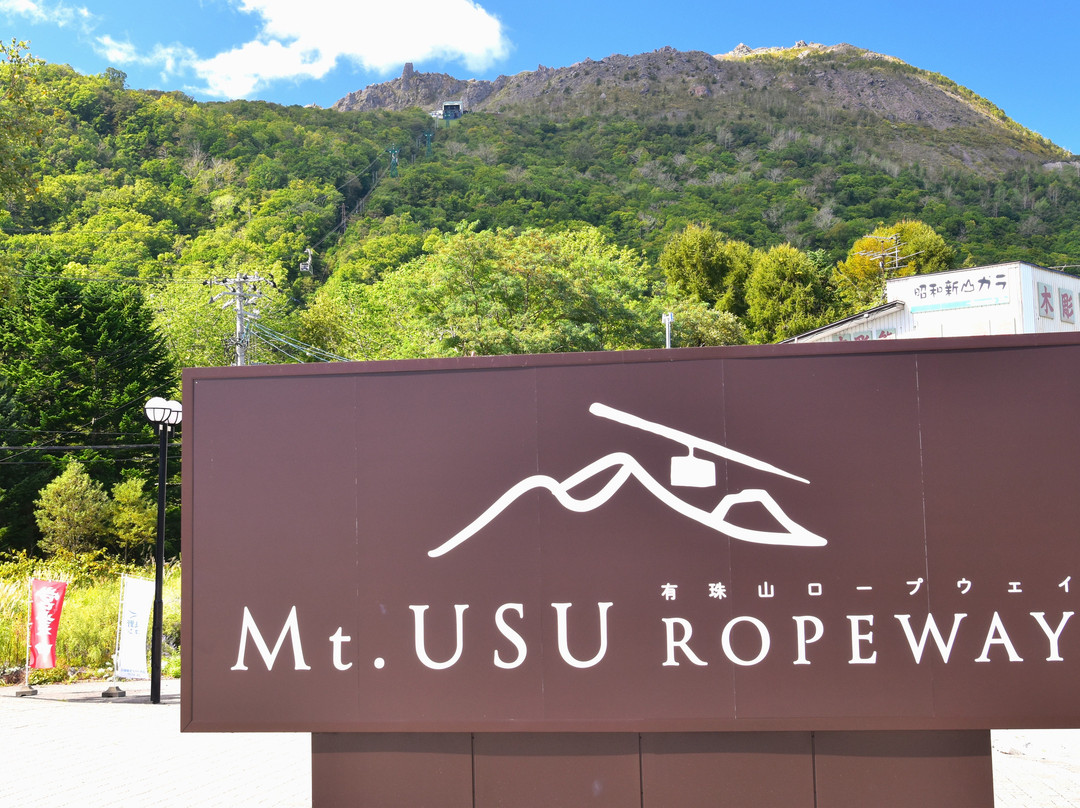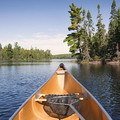的点评
Swept away by the stupendous views from gondola and at the summit station observation decks
有珠山缆车的点评
点评:As one of the attractions in our 10-day Hokkaido self-drive itinerary, my family and I took the Usuzan Ropeway (有珠山ロープウェイ) on a Sunday mid-morning. As the name implies, this is the ropeway or cable car that takes you to Mount Usu (Usuzan有珠山) – an active volcano in the Shikotsu-Tōya National Park (支笏洞爺国立公園), that was formed thousands of years ago and has erupted 4 times in the last 100 years with the most recent eruption in 2000.
Getting there: We drove our rental car for about one hour from Noboribetsu to a small town, Kazan Mura (translates as ‘volcano village’), using Apple Map and Google Map on the Apple Car Play. Kazan Mura is at the foot of Mount Shōwa-shinzan and is where the base or lower station of the Usuzan Ropeway is. The drive from Tōyako Onsen, Sapporo, New Chitose Airport and Hakodate to Kazan Mura would take 10 minutes, 2 hours, 1.5 hours and 3 hours respectively. Alternatively, you could take the bus from Tōyako Onsen Bus Terminal to Shōwa-shinzan stop (about 15 minutes) and from this last stop walk 15 minutes for about 990 metres to Kazan Mura. There are only 4 bus services a day, so do check the bus schedules as it typically does not run during winter (December to April).
We parked our rental car for ¥500 at one of the 400 car park lots. Next to the car park is a brown rocky active volcano known as Mount Showa Shinzan (translated as “new mountain in Showa period”) - which according to the information boards of Tōya-Usu UNESCO Global Geopark at Mount Usu Terrace and the Showa-Shinzan Shikotsu-Tōya National Park - is a lava dome created during the 1944-1945 Mount Usu eruption and its 290 metres rise above a flat farmland was recorded by a postmaster Mr Masao Mimatsu. It was recognized as a special natural treasure of Japan in 1957.
Around the Usuzan Ropeway Sanroku Station (base station): Before or after the Usuzan Ropeway ride, you could visit the following in Kazan Mura (“volcano village”): Masao Mimatsu Memorial Hall (¥300 adults, 8am – 5pm April to October or 9am – 4pm November to March), Kamameshi Yoshidaya and Funkatei restaurants, free-of-charge Tōya Caldera and Usu Volcano Global Geopark Village Information Centers (provides information on what to explore in the Geopark including Mount Usu), free-of-charge Eruption Experience Room (which through sounds and images enables you to experience a volcanic eruption with the magma coming up), souvenir shops (some combine with dining, for example Oyama Shop Shizando) and Showa Shinzan Bear Ranch. If you have time to spare, you could take a short walk to get a closer view of Mount Showa Shinzan.
Ropeway fees: The Usuzan Ropeway starts its first upward ride at 8:15am and returns its last downward ride at 5:45pm (May to mid-September) or 5:15pm (mid-September to mid-October) or 4:30pm (mid-October to mid-November). From mid-November to end December, it starts at 9 am and returns at 4pm. A round-trip ticket costs ¥1800 for adults and ¥900 for child (up to elementary school). Group fare for at least 15 persons are available at discounted prices.
The Ropeway: The 1.4 km long Usuzan Ropeway was first opened in 1965 and is operated by Wakasa Resort. It travels back and forth between the base (bottom) Showa Shinzan Sanroku Station and the summit Usuzan Sancho Station, the latter is at an elevation of 737 meters above sea level. Even though every rectangular gondola can accommodate up to 106 persons, the actual number of passengers depends on the departure timing, the season and whether it is a weekday or weekend. However, I observed that the frequent interval of 15 minutes between two gondolas helped in not squeezing to the maximum number of passengers. Before the departure of the gondolas, a boarding announcement was made.
The ride duration is 6 minutes, and what an interesting 6 minutes it turned out to be! As the gondola ascended, we saw, through the full-length glass panels, behind us on the right, the brown “T-shaped” Mount Showa Shinzan and then we (and the passengers) became excited with the appearance of the top half of Nakajima Islands and Mount Yotei (Yoteizan) and finally the southern section of Lake Toya ((Tōyako), Nakajima Island, Kannon Island, Mount Yotei; Lake Tōya is the third largest caldera lake in Japan. The other side also offers magnificent views of long mountain range that is part of the Shikotsu-Tōya National Park. Hence I recommend you place yourself at the right side of the gondola when going up or the left side of the gondola when coming down. If you cannot, do not worry because you would be swept off your feet even more by the breath-taking views at the Lake Tōya Observation Deck at the summit Sancho Station.
At the Usuzan Sancho Station: Upon alighting from the gondola or cable car at the Usuzan Sancho (summit) Station we saw several exhibits or panels that narrates the Mount Usu eruption phenomenon and history (erupting every 30 years on average) as we walked towards the exit. Upon exiting the Sancho Station, we came to a spot of signposts that directed us to Mount Usu Crater Basin Observatory (go left) and Lake Tōya Observatory (go right). We did both and although both are uniquely different, they are nonetheless impressive. We walked about 10 minutes to the Mount Usu Crater Basin Observatory or Observation Deck from the Usu Ropeway summit station for stupendous views of Uchira Bay and Mount Usu's largest crater, which was formed in an eruption in 1977. On the other hand, Lake Tōya Observatory or Observation Deck, which is part of the Mount Usu Terrace, is just next to the Usu Ropeway Sancho Station. The Terrace, upgraded in 2022 comprises outdoor grey chairs and square tables placed on 3 “step levels” in an open enclosure area as well as three huge private couch seats next to the enclosure area for about 90 visitors to enjoy the surrounding scenery in a “luxurious” yet relaxing setting. In front of or at the lowest level of the Terrace is the large rectangular Lake Tōya (Usuzan Toyako) Observation Deck with sweeping panoramic views of Mount Yotei, Mount Shiribetsu, Lake Tōya, Nakajima Island, Kannon Island, Mount Showa Shinzan, Sobetsu town and the long mountain range that is part of the Shikotsu-Toya National Park. There are no chairs at the Observation Deck but standing here looking at the stupendous views was enough to make us in awe of the natural landscape as well as the grand sculpturing work of Mother Earth.
To the right of the Terrace is the Café Mt Usu which opens daily from 9am to 4pm offering a limited menu items made from local ingredients such as triangular grilled sandwich and Geo Blessing Smoothie.
Overall, we had a truly great time at this Usu Ropeway attraction. Riding the gondola or cable car from the base Sanroku Station to the summit Usuzan Sancho station was like a bird flying higher and higher and looking from its eyes (bird’s eyes view) the unfolding of the stupendous scenery of Lake Toya and the volcanic mountains (Mount Yotei, Mount Showa Shinzan and then top it up with even more stupendous scenery from the two observatory decks linked to the summit station. I strongly recommend you “must visit” Usu Ropeway attraction when you are at the Shikotsu-Tōya National Park or in Hokkaido for that matter – you would be swept away by the views during the ascent and when you are at the top!
Getting there: We drove our rental car for about one hour from Noboribetsu to a small town, Kazan Mura (translates as ‘volcano village’), using Apple Map and Google Map on the Apple Car Play. Kazan Mura is at the foot of Mount Shōwa-shinzan and is where the base or lower station of the Usuzan Ropeway is. The drive from Tōyako Onsen, Sapporo, New Chitose Airport and Hakodate to Kazan Mura would take 10 minutes, 2 hours, 1.5 hours and 3 hours respectively. Alternatively, you could take the bus from Tōyako Onsen Bus Terminal to Shōwa-shinzan stop (about 15 minutes) and from this last stop walk 15 minutes for about 990 metres to Kazan Mura. There are only 4 bus services a day, so do check the bus schedules as it typically does not run during winter (December to April).
We parked our rental car for ¥500 at one of the 400 car park lots. Next to the car park is a brown rocky active volcano known as Mount Showa Shinzan (translated as “new mountain in Showa period”) - which according to the information boards of Tōya-Usu UNESCO Global Geopark at Mount Usu Terrace and the Showa-Shinzan Shikotsu-Tōya National Park - is a lava dome created during the 1944-1945 Mount Usu eruption and its 290 metres rise above a flat farmland was recorded by a postmaster Mr Masao Mimatsu. It was recognized as a special natural treasure of Japan in 1957.
Around the Usuzan Ropeway Sanroku Station (base station): Before or after the Usuzan Ropeway ride, you could visit the following in Kazan Mura (“volcano village”): Masao Mimatsu Memorial Hall (¥300 adults, 8am – 5pm April to October or 9am – 4pm November to March), Kamameshi Yoshidaya and Funkatei restaurants, free-of-charge Tōya Caldera and Usu Volcano Global Geopark Village Information Centers (provides information on what to explore in the Geopark including Mount Usu), free-of-charge Eruption Experience Room (which through sounds and images enables you to experience a volcanic eruption with the magma coming up), souvenir shops (some combine with dining, for example Oyama Shop Shizando) and Showa Shinzan Bear Ranch. If you have time to spare, you could take a short walk to get a closer view of Mount Showa Shinzan.
Ropeway fees: The Usuzan Ropeway starts its first upward ride at 8:15am and returns its last downward ride at 5:45pm (May to mid-September) or 5:15pm (mid-September to mid-October) or 4:30pm (mid-October to mid-November). From mid-November to end December, it starts at 9 am and returns at 4pm. A round-trip ticket costs ¥1800 for adults and ¥900 for child (up to elementary school). Group fare for at least 15 persons are available at discounted prices.
The Ropeway: The 1.4 km long Usuzan Ropeway was first opened in 1965 and is operated by Wakasa Resort. It travels back and forth between the base (bottom) Showa Shinzan Sanroku Station and the summit Usuzan Sancho Station, the latter is at an elevation of 737 meters above sea level. Even though every rectangular gondola can accommodate up to 106 persons, the actual number of passengers depends on the departure timing, the season and whether it is a weekday or weekend. However, I observed that the frequent interval of 15 minutes between two gondolas helped in not squeezing to the maximum number of passengers. Before the departure of the gondolas, a boarding announcement was made.
The ride duration is 6 minutes, and what an interesting 6 minutes it turned out to be! As the gondola ascended, we saw, through the full-length glass panels, behind us on the right, the brown “T-shaped” Mount Showa Shinzan and then we (and the passengers) became excited with the appearance of the top half of Nakajima Islands and Mount Yotei (Yoteizan) and finally the southern section of Lake Toya ((Tōyako), Nakajima Island, Kannon Island, Mount Yotei; Lake Tōya is the third largest caldera lake in Japan. The other side also offers magnificent views of long mountain range that is part of the Shikotsu-Tōya National Park. Hence I recommend you place yourself at the right side of the gondola when going up or the left side of the gondola when coming down. If you cannot, do not worry because you would be swept off your feet even more by the breath-taking views at the Lake Tōya Observation Deck at the summit Sancho Station.
At the Usuzan Sancho Station: Upon alighting from the gondola or cable car at the Usuzan Sancho (summit) Station we saw several exhibits or panels that narrates the Mount Usu eruption phenomenon and history (erupting every 30 years on average) as we walked towards the exit. Upon exiting the Sancho Station, we came to a spot of signposts that directed us to Mount Usu Crater Basin Observatory (go left) and Lake Tōya Observatory (go right). We did both and although both are uniquely different, they are nonetheless impressive. We walked about 10 minutes to the Mount Usu Crater Basin Observatory or Observation Deck from the Usu Ropeway summit station for stupendous views of Uchira Bay and Mount Usu's largest crater, which was formed in an eruption in 1977. On the other hand, Lake Tōya Observatory or Observation Deck, which is part of the Mount Usu Terrace, is just next to the Usu Ropeway Sancho Station. The Terrace, upgraded in 2022 comprises outdoor grey chairs and square tables placed on 3 “step levels” in an open enclosure area as well as three huge private couch seats next to the enclosure area for about 90 visitors to enjoy the surrounding scenery in a “luxurious” yet relaxing setting. In front of or at the lowest level of the Terrace is the large rectangular Lake Tōya (Usuzan Toyako) Observation Deck with sweeping panoramic views of Mount Yotei, Mount Shiribetsu, Lake Tōya, Nakajima Island, Kannon Island, Mount Showa Shinzan, Sobetsu town and the long mountain range that is part of the Shikotsu-Toya National Park. There are no chairs at the Observation Deck but standing here looking at the stupendous views was enough to make us in awe of the natural landscape as well as the grand sculpturing work of Mother Earth.
To the right of the Terrace is the Café Mt Usu which opens daily from 9am to 4pm offering a limited menu items made from local ingredients such as triangular grilled sandwich and Geo Blessing Smoothie.
Overall, we had a truly great time at this Usu Ropeway attraction. Riding the gondola or cable car from the base Sanroku Station to the summit Usuzan Sancho station was like a bird flying higher and higher and looking from its eyes (bird’s eyes view) the unfolding of the stupendous scenery of Lake Toya and the volcanic mountains (Mount Yotei, Mount Showa Shinzan and then top it up with even more stupendous scenery from the two observatory decks linked to the summit station. I strongly recommend you “must visit” Usu Ropeway attraction when you are at the Shikotsu-Tōya National Park or in Hokkaido for that matter – you would be swept away by the views during the ascent and when you are at the top!
翻译:作为我们 10 天北海道自驾游行程中的景点之一,我和家人在周日上午乘坐了有珠山缆车。顾名思义,这是一条缆车,可带您前往有珠山——支笏洞爷国立公园内的一座活火山,形成于数千年前,在过去的 100 年中喷发了 4 次,最近一次喷发是在 2000 年。
到达那里:我们从登别开着租来的车,大约一个小时就到达了一个小镇,喀山村(翻译为“火山村”),使用 Apple Car Play 上的 Apple Map 和 Google Map。喀山村位于昭和新山山脚下,是乌珠山索道的山脚站。从洞爷湖温泉、札幌、新千岁机场和函馆到喀山村的车程分别需要 10 分钟、2 小时、1.5 小时和 3 小时。或者,您可以从洞爷湖温泉巴士总站乘坐巴士到昭和新山站(约 15 分钟),然后从最后一站步行 15 分钟,约 990 米到达喀山村。每天只有 4 趟巴士,所以一定要查看巴士时刻表,因为冬季(12 月至 4 月)通常不运行。
我们以 500 日元的价格将租来的车停在 400 个停车场之一。停车场旁边是一座棕色岩石活火山,被称为昭和新山。根据有珠山平台的洞爷湖有珠联合国教科文组织世界地质公园和昭和新山支笏洞爷湖国家公园的信息板,这座火山是 1944-1945 年有珠山火山爆发时形成的熔岩穹丘,其高出平坦农田 290 米,由邮政局长三松正男先生记录下来。 1957年被认定为日本特别天然纪念物。
有珠山索道山麓站(基地站)周边:乘坐有珠山索道之前或之后,您可以参观火山村的以下景点:三松正男纪念馆(成人300日元,4月至10月上午8点至下午5点或11月至3月上午9点至下午4点)、釜饭吉田屋和Funkatei餐厅、免费的洞爷火山口和有珠火山全球地质公园村信息中心(提供有关在有珠山等地质公园内探索的信息)、免费的火山喷发体验室(通过声音和图像,您可以体验火山喷发和岩浆喷发)、纪念品商店(有些与餐饮相结合,例如Oyama Shop Shizando)和昭和新山熊牧场。如果时间充裕,可以步行一小段距离,近距离观赏昭和新山。
索道费用:有珠山索道上行第一班时间为上午 8:15,下行最后一班时间为下午 5:45(5 月至 9 月中旬)或下午 5:15(9 月中旬至 10 月中旬)或下午 4:30(10 月中旬至 11 月中旬)。11 月中旬至 12 月底,上行第一班时间为上午 9 点,下行最后一班时间为下午 4 点。往返票价为成人 1800 日元,儿童(小学以下)900 日元。15 人以上团体票价可享受折扣价。
索道:有珠山索道全长 1.4 公里,于 1965 年首次开通,由若狭度假村运营。缆车往返于山脚的昭和新山山麓站和山顶的有珠山山顶站之间,后者海拔 737 米。虽然每辆矩形缆车最多可容纳 106 人,但实际乘客人数取决于出发时间、季节以及是工作日还是周末。不过,我发现两辆缆车之间经常有 15 分钟的间隔,这有助于避免挤满乘客。缆车出发前会播报上车时间。
乘坐时间为 6 分钟,这 6 分钟真是有趣啊!随着缆车的上升,透过全长的玻璃板,我们可以看到右后方的褐色“T 字形”昭和新山,然后我们(和乘客们)兴奋地看到了中岛群岛的上半部分和羊蹄山,最后是洞爷湖南部(洞爷湖、中岛、观音岛、羊蹄山;洞爷湖是日本第三大火山口湖)。另一边还可以欣赏到属于支笏洞爷国家公园的绵长山脉的壮丽景色。因此,我建议您上山时坐在缆车的右侧,下山时坐在缆车的左侧。如果不能,也不用担心,因为山顶山顶站的洞爷湖观景台的壮丽景色会让您更加陶醉。
在有珠山山顶站:在有珠山下车后山顶站,我们走向出口时,看到了几个展览或面板,讲述了有珠山喷发现象和历史(平均每 30 年喷发一次)。离开山顶站后,我们来到一个路标点,指引我们前往有珠山火山口盆地瞭望台(向左走)和洞爷湖瞭望台(向右走)。我们两个都去了,虽然两个地方各有特色,但都令人印象深刻。我们从有珠缆车山顶站步行约 10 分钟到达有珠山火山口盆地瞭望台,可以欣赏到宇智罗湾和有珠山最大火山口的壮丽景色,该火山口形成于 1977 年的一次火山喷发。另一方面,洞爷湖瞭望台是有珠山露台的一部分,就在有珠缆车山顶站旁边。露台于 2022 年升级,包括放置在开放式封闭区域 3 个“台阶”上的户外灰色椅子和方桌,以及封闭区域旁边的三个巨大的私人沙发座位,可容纳约 90 名游客在“奢华”而轻松的环境中欣赏周围的风景。露台的前面或最底层是大型矩形洞爷湖(有珠山洞爷湖)观景台,可以一览羊蹄山、尻别山、洞爷湖、中岛、观音岛、昭和新山、壮瞥镇和支笏洞爷国家公园的长山脉的全景。观景台上没有椅子,但站在这里欣赏壮丽的景色足以让我们惊叹于自然景观以及地球母亲的宏伟雕塑作品。
露台右侧是 Café Mt Usu,每天上午 9 点至下午 4 点营业,提供由当地食材制成的有限菜单,例如三角烤三明治和 Geo Blessing 冰沙。
总的来说,我们在有珠索道这个景点度过了一段非常愉快的时光。乘坐缆车或缆车从山脚的山麓站到达山顶的有珠山顶站,就像一只鸟越飞越高,从它的眼睛(鸟瞰图)看洞爷湖和火山(羊蹄山、昭和新山)的壮丽景色,然后从与山顶站连接的两个观景台上欣赏更加壮丽的风景。当您在支笏洞爷国家公园或北海道时,我强烈建议您“必去”有珠索道景点——您在攀登过程中和到达山顶时一定会被眼前的美景所震撼!
到达那里:我们从登别开着租来的车,大约一个小时就到达了一个小镇,喀山村(翻译为“火山村”),使用 Apple Car Play 上的 Apple Map 和 Google Map。喀山村位于昭和新山山脚下,是乌珠山索道的山脚站。从洞爷湖温泉、札幌、新千岁机场和函馆到喀山村的车程分别需要 10 分钟、2 小时、1.5 小时和 3 小时。或者,您可以从洞爷湖温泉巴士总站乘坐巴士到昭和新山站(约 15 分钟),然后从最后一站步行 15 分钟,约 990 米到达喀山村。每天只有 4 趟巴士,所以一定要查看巴士时刻表,因为冬季(12 月至 4 月)通常不运行。
我们以 500 日元的价格将租来的车停在 400 个停车场之一。停车场旁边是一座棕色岩石活火山,被称为昭和新山。根据有珠山平台的洞爷湖有珠联合国教科文组织世界地质公园和昭和新山支笏洞爷湖国家公园的信息板,这座火山是 1944-1945 年有珠山火山爆发时形成的熔岩穹丘,其高出平坦农田 290 米,由邮政局长三松正男先生记录下来。 1957年被认定为日本特别天然纪念物。
有珠山索道山麓站(基地站)周边:乘坐有珠山索道之前或之后,您可以参观火山村的以下景点:三松正男纪念馆(成人300日元,4月至10月上午8点至下午5点或11月至3月上午9点至下午4点)、釜饭吉田屋和Funkatei餐厅、免费的洞爷火山口和有珠火山全球地质公园村信息中心(提供有关在有珠山等地质公园内探索的信息)、免费的火山喷发体验室(通过声音和图像,您可以体验火山喷发和岩浆喷发)、纪念品商店(有些与餐饮相结合,例如Oyama Shop Shizando)和昭和新山熊牧场。如果时间充裕,可以步行一小段距离,近距离观赏昭和新山。
索道费用:有珠山索道上行第一班时间为上午 8:15,下行最后一班时间为下午 5:45(5 月至 9 月中旬)或下午 5:15(9 月中旬至 10 月中旬)或下午 4:30(10 月中旬至 11 月中旬)。11 月中旬至 12 月底,上行第一班时间为上午 9 点,下行最后一班时间为下午 4 点。往返票价为成人 1800 日元,儿童(小学以下)900 日元。15 人以上团体票价可享受折扣价。
索道:有珠山索道全长 1.4 公里,于 1965 年首次开通,由若狭度假村运营。缆车往返于山脚的昭和新山山麓站和山顶的有珠山山顶站之间,后者海拔 737 米。虽然每辆矩形缆车最多可容纳 106 人,但实际乘客人数取决于出发时间、季节以及是工作日还是周末。不过,我发现两辆缆车之间经常有 15 分钟的间隔,这有助于避免挤满乘客。缆车出发前会播报上车时间。
乘坐时间为 6 分钟,这 6 分钟真是有趣啊!随着缆车的上升,透过全长的玻璃板,我们可以看到右后方的褐色“T 字形”昭和新山,然后我们(和乘客们)兴奋地看到了中岛群岛的上半部分和羊蹄山,最后是洞爷湖南部(洞爷湖、中岛、观音岛、羊蹄山;洞爷湖是日本第三大火山口湖)。另一边还可以欣赏到属于支笏洞爷国家公园的绵长山脉的壮丽景色。因此,我建议您上山时坐在缆车的右侧,下山时坐在缆车的左侧。如果不能,也不用担心,因为山顶山顶站的洞爷湖观景台的壮丽景色会让您更加陶醉。
在有珠山山顶站:在有珠山下车后山顶站,我们走向出口时,看到了几个展览或面板,讲述了有珠山喷发现象和历史(平均每 30 年喷发一次)。离开山顶站后,我们来到一个路标点,指引我们前往有珠山火山口盆地瞭望台(向左走)和洞爷湖瞭望台(向右走)。我们两个都去了,虽然两个地方各有特色,但都令人印象深刻。我们从有珠缆车山顶站步行约 10 分钟到达有珠山火山口盆地瞭望台,可以欣赏到宇智罗湾和有珠山最大火山口的壮丽景色,该火山口形成于 1977 年的一次火山喷发。另一方面,洞爷湖瞭望台是有珠山露台的一部分,就在有珠缆车山顶站旁边。露台于 2022 年升级,包括放置在开放式封闭区域 3 个“台阶”上的户外灰色椅子和方桌,以及封闭区域旁边的三个巨大的私人沙发座位,可容纳约 90 名游客在“奢华”而轻松的环境中欣赏周围的风景。露台的前面或最底层是大型矩形洞爷湖(有珠山洞爷湖)观景台,可以一览羊蹄山、尻别山、洞爷湖、中岛、观音岛、昭和新山、壮瞥镇和支笏洞爷国家公园的长山脉的全景。观景台上没有椅子,但站在这里欣赏壮丽的景色足以让我们惊叹于自然景观以及地球母亲的宏伟雕塑作品。
露台右侧是 Café Mt Usu,每天上午 9 点至下午 4 点营业,提供由当地食材制成的有限菜单,例如三角烤三明治和 Geo Blessing 冰沙。
总的来说,我们在有珠索道这个景点度过了一段非常愉快的时光。乘坐缆车或缆车从山脚的山麓站到达山顶的有珠山顶站,就像一只鸟越飞越高,从它的眼睛(鸟瞰图)看洞爷湖和火山(羊蹄山、昭和新山)的壮丽景色,然后从与山顶站连接的两个观景台上欣赏更加壮丽的风景。当您在支笏洞爷国家公园或北海道时,我强烈建议您“必去”有珠索道景点——您在攀登过程中和到达山顶时一定会被眼前的美景所震撼!




此点评仅代表旅行者个人的主观意见,并不代表TripAdvisor以及其合作方的意见。
关于我们
|新闻动态
|商务合作
|会员中心
|业主中心
|常见问题
|意见反馈
|联系我们
|营业执照
© 2025 Tripadvisor 版权所有。
使用条款 |隐私政策 |网站工作原理
部分照片由 VFM Leonardo 提供。
* Tripadvisor不是旅行社,也不是旅游预订服务代理商。我们提供免费、客观、公正的旅游资讯服务。 (显示更多)
TripAdvisor LLC 既不是预订代理商,也不是旅游运营商,不会向网站用户收取任何服务费。 按照规定,在 Tripadvisor 发布机票价格、游览和旅行套餐的合作伙伴(航空公司、旅行提供商及预订代理商),其标价须包含所有费用和附加费用。 例如, 机场出入境税费、消费税与其他服务费、手续费、杂费及附加费用。 当您向我们的某个合作伙伴进行预订时,请务必查阅他们的网站以了解当地行政部门要求的所有适用费用的具体情况。 除非另有说明,机票价格通常指的是一个人的价格(以人民币计)。
为方便起见,TripAdvisor LLC 根据从我们的预订合作伙伴获取的空房率计算每个酒店的均价。 对于游览和景点来说,所显示价格通常是每位成人的最低可用价格。 对于列出的任何旅行套餐或优惠,TripAdvisor LLC 无法保证任何特定的费率或价格。 此外,酒店均价每晚会更新,并以您的首选币种表示(使用现行汇率)。 由于这些已换算的价格是预估价格,因此,有关具体金额和币种请与预订网站进行核实。
此外,TripAdvisor LLC 无法保证我们网站上宣传的价格随时有效。 标价可能需要预订一定天数才能生效,或有不可用日期、使用条件或限制。
TripAdvisor公司对外部网站的内容一概不负责。优惠价格中不含税和其他费用。
ICP证:沪B2-20200433
沪ICP备20013175号
 沪公网安备31010502005427号
沪公网安备31010502005427号鹰程信息技术(上海)有限公司
货币/国家及地区
¥CNY
中国

